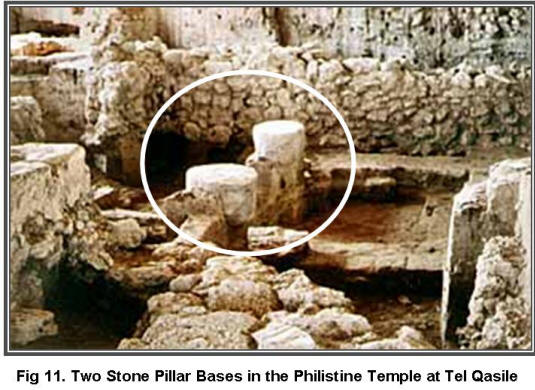Tuesday, February 25, 2014
daniel
The Text
24 Seventy weeks are determined
For your people and for your holy city,
To finish the transgression,
To make an end of sins,
To make reconciliation for iniquity,
To bring in everlasting righteousness,
To seal up vision and prophecy,
And to anoint the Most Holy.
25 Know therefore and understand,
That from the going forth of the command
To restore and build Jerusalem
Until Messiah the Prince,
There shall be seven weeks and sixty-two weeks;
The street shall be built again, and the wall,
Even in troublesome times.
26 And after the sixty-two weeks
Messiah shall be cut off, but not for Himself;
And the people of the prince who is to come
Shall destroy the city and the sanctuary.
The end of it shall be with a flood,
And till the end of the war desolations are determined.
27 Then he shall confirm a covenant with many for one
week; But in the middle of the week
He shall bring an end to sacrifice and offering.
And on the wing of abominations shall be one who makes desolate,
Even until the consummation, which is determined,
Is poured out on the desolate.
Daniel 9:24-27 (NKJV)
Background to the Seventy-Weeks
To understand Daniel’s 70 Weeks, we need to understand God’s unique relationship with the people and land of Israel.
The relationship is 4000 years old and dates back to the time of Abraham about 2100 B.C. Abraham lived in the city of Ur located in present day Iraq. In Ur, Abraham and his family set out for Canaan, present day Israel. On the way, In the city of Haran, God appeared to Abraham and told him,
1Now the Lord had said to Abram: “Get out of your country, From your family And from your father’s house, To a land that I will show you. 2I will make you a great nation; I will bless you And make your name great; And you shall be a blessing. 3I will bless those who bless you, And I will curse him who curses you; And in you all the families of the earth shall be blessed.” Genesis 12:1-3 (NKJV)
When Abraham arrived in the land at Mt. Moriah, present day Jerusalem. God promised Abraham,
“To your descendents I will give this land” Genesis 12:7. (NKJV)
In Canaan (Israel), some time after the birth his son Isaac, in a test of faith, God instructed Abraham to take Isaac to the top of Mt. Moriah and offer him as a sacrifice. At the top of Moriah, as Abraham was about offer Isaac as a sacrifice, the Angel of the Lord intervenes and prevents the sacrifice from taking place. God again declares to Abraham.
17“blessing I will bless you, and multiplying I will multiply your descendants as the stars of the heaven and as the sand which is on the seashore; and your descendants shall possess the gate of their enemies. 18“In your seed all the nations of the earth shall be blessed, because you have obeyed My voice.” Genesis 22:17-18 (NKJV)
God established a covenant relationship with Abraham and his descendants. This “Abrahamic Covenant” would later, be passed to Isaac and his son, Jacob. Before Abraham died about 20 miles to the south of Jerusalem in the city of Hebron, Abraham purchased a burial site, the cave of Machpellah, from the Hittites. To this very day lies the bodies of Abraham, Isaac and Jacob along with their wives, Sarah, Rebecca and Leah. Apart from Jerusalem, this site known as the “Tomb of the Patriarch’s” is the most hotly contested site between Jews and Palestinians.
Before being buried in the cave of Machpelah, Jacob would move his family to Egypt to escape the famine of the land of Canaan. Joseph, Jacob’s 2nd youngest son, became the most powerful man in Egypt next to pharaoh.
Jealous of Jacob’s love for Joseph, his brothers sold him as a slave to Ishmaelites who took him to Egypt. In Egypt, Joseph rose from slave to prime minister by the time he was thirty. Later, Joseph welcomed his brothers and family into the Egypt where they were preserved. The descendents of Joseph and his 11 brothers’ would be known as the tribes of Israel.
Jacob’s descendents would grow from the 70 who moved to Egypt to over 1 million in the next 400 years. After Jacob died his body was taken to Hebron and buried with his father Isaac and grandfather Abraham.
After 400 years, his descendents were no longer welcomed. Pharaoh, the king of Egypt, viewed the tribes of Israel as a hostile threat to Egyptian survival. Egypt began a systematic plan to destroy the tribes of Israel. By killing the male children, Egypt would assimilate Israel. Jacob’s descendents cried out to the God of Abraham. Moses, a Hebrew of the tribe of Levi, raised in Pharaoh’s house, was called by God to lead Israel out of Egypt into the land promised to Abraham, 600 years earlier.
At the hand of Moses God sent plagues on Egypt to free Israel. Finally after the 10th plague, the death of the “first born” in Egypt . Death “Passed over” those who put the blood of a lamb on their door posts whether Egyptian or Israelite. Egypt’s Pharaoh agreed to release the tribes of Jacob. Into the wildness of Sinai, Moses lead the descendents of Jacob back to the land of promise where Jacob was buried, through the Sinai desert.
On the exodus journey, Israel rebelled against God. Moses was on Mt. Sinai, receiving the 10 commandments, the law of God. After Moses delayed, returning from the top of the mountain, Aaron his brother made an idol, a golden calf to lead Israel back to Egypt. The rejection of God’s authority, angered God to the point of judgment. Speaking to Moses, God said,
“Now therefore, let Me alone, that My wrath may burn hot against them and I may consume them. And I will make of you a great nation.”Exodus 32:10 (NKJV)
Blessing and Curses promised to Israel
Only after Moses interceded did God relent. But Israel’s rebellion would not end at Sinai. The Lord confirmed his covenant relationship with Israel the descendents of Abraham. His covenant with Israel came with promises of blessings for obedience and curses for disobedience (Deut.27-28).
If Israel obeyed they would be blessed above all nations on the earth. But if Israel disobeyed they would be scattered amongst the nations.
64“Then the LORD will scatter you among all peoples, from one end of the earth to the other, and there you shall serve other gods, which neither you nor your fathers have known—wood and stone. 65And among those nations you shall find no rest, nor shall the sole of your foot have a resting place; but there the LORD will give you a trembling heart, failing eyes, and anguish of soul. Deut 28:64,65 (NKJV)
With one voice Israel agreed to the covenant with God on the border of Canaan. But Moses was not to lead Israel into the land.
After Moses died, Joshua led Israel into the promised land as described in the book of Joshua about 1400 B.C. Prophets and judges led the tribes of Israel for the next 400 years. However, Israel wanted a king like the other nations. God listened to their demands and Israel was established as a nation under King Saul by the prophet Samuel in 1050 B.C. Saul’s disobedience caused him to be replaced by one of his commanders, David in 1025 B.C.
David from the tribe of Judah, wanted to build a temple for the God of Abraham. God rejected David’s offer, but God sent Nathan the prophet to him and established theDavidic Covenant. Through David God would establish a eternal kingdom, throne and king. Through David family line the promised Messiah would come into the world. The Messiah would be a “Son of David”.
12“When your days are fulfilled and you rest with your fathers, I will set up your seed after you, who will come from your body, and I will establish his kingdom. 13He shall build a house for My name, and I will establish the throne of his kingdom forever. 2 Samuel 7:12,13 (NKJV)
The Temple and Israel as a sign
David’s son, Solomon, built God’s temple on the very spot his forefather Abraham was promised the land.
On the top of Mt. Moriah where Abraham’s faith was tested, Solomon constructed the Temple of God. Only on Mt. Moriah, God would permit a temple to be built. After its completion, God accepted Solomon Temple and but warned if Israel disobeyed the Temple would be brought to ruins and the people scattered.
19“But if you turn away and forsake My statutes and My commandments which I have set before you….. 20“then I will uproot them from My land which I have given them; and this house which I have sanctified for My name I will cast out of My sight, and will make it a proverb and a byword among all peoples. 21“And as for this house, which is exalted, everyone who passes by it will be astonished and say, ‘Why has the Lord done thus to this land and this house?’2 Chronicles 7:19-21 (NKJV)
After Solomon’s death the kingdom of Israel was divided into two kingdoms. The northern kingdom, Israel, wasmade up of 10 tribes and the Southern kingdom, Judah, composed the tribes Judah and Benjamin.
The sins of Israel and Judah were the same the same, the people rejected the God of Abraham and turned to idolatry. They began to worship the god’s of the neighboring nations. They followed Baal and Ashtorah of the Canaanites, Molech of the Ammonites, Chemosh of the Moabites and Tammuz of the Phoenicians.
Prophets sent to warn both , Judah and Israel of the coming judgments included Elijah, Isaiah, Jeremiah, Hosea and Ezekiel. The prophets were rejected, mocked, and killed. Isaiah was sawed in two during the rein of Manasseh. Israel was judged first , in 722 B.C, the Assyrian kingdom defeated Israel and carried Israel into captivity.
Judah was sparred an Assyrian victory during Hezekiah’s reign. In 690 B.C., the armies of Sennecherib, king of Assyria surrounded Jerusalem but retreated after 185,000 troops died outside the walls of Jerusalem. Assyrian writers confirm the retreat of Assyrian forces from Jerusalem. However, 90 years later, Judah was no better then Israel in apostasy.
God, proving His case, for judgment takes Ezekiel into Solomon’s Temple, showing him the idolatry of the priests and leaders of Judah. Idols at the gate of the altar, on the walls and the leaders of Israel worshipping them. Women cried for the god Tammuz, and many worshipped the sun. The Lord asked Ezekiel,
17And He said to me, “Have you seen this, O son of man? Is it a trivial thing to the house of Judah to commit the abominations which they commit here?Ezekiel 8:17 (NKJV)
The punishment was destruction of the Temple and captivity in Babylon, fulfilling the curses of the covenant promised in Sinai and to Solomon. (Deuteronomy 28:64, 2 Chronicles 7:19-21 to be scattered in the earth).
The Captivity of Judah
Judah was judged and the promises fulfilled. The city of Jerusalem, was conquered by the armies of Babylon in 605 B.C. Captives were taken to Babylon, a young noble named Daniel was included in the captivity, Jerusalem submitted to Babylon.
Eight years later, Judah rebelled against Babylon, in 597 B.C. Babylon again conquered the city taking more hostages and installing a new king. Finally, after a third revolt in 586 B.C, Babylon destroyed the city of Jerusalem, the walls and Solomon’s Temple. Most were killed, some taken captive and the poorest of the people were left to take care of the land. Jeremiah’s book Lamentations documents the pain of this event.
Jerusalem was left a barren unprotected city with no temple and no walls. In 586 B.C., Daniel was a captive in Babylon for 19 years. During his captivity, he became prime minister under Nebuchadnezzar, King of Babylon. After Nebuchadnezzar’s death, succeeding rulers forgot about Daniel, till Babylon’s defeat.
Then in the year 539 B.C., 67 years after Daniel was taken captive, the Persian-Median Empire under Darius the Mede and Cyrus the Persian conquered the kingdom of Babylon, Daniel was appointed prime minister under the in the Persian Empire (Daniel 6). The people of Judah had now been captive almost 70 years. Daniel knew the time of captivity was limited to 70 years as foretold by Jeremiah. (Jeremiah 25:11-12)
2in the first year of his reign I, Daniel, understood by the books the number of the years specified by the word of the Lord through Jeremiah the prophet, that He would accomplish seventy years in the desolations of Jerusalem. Daniel 9:2 (NKJV)
Intercession of Daniel
Daniel was 82 to 90 years old at this point. He was taken captive as a young man and he remained under the Babylonian and Persian kingdoms for almost 70 years. Time was at hand for the return of his people. Daniel took the role of intercessor for Israel and the Temple.
Now while I was speaking, praying, and confessing my sin and the sin of my people Israel, and presenting my supplication before the Lord my God for the holy mountain of my God Daniel 9:20
Answering Daniel's prayer, the Lord commanded the angel Gabriel to show Daniel his plan for the world and the role Israel would play. Israel and Jerusalem would serve the role as “God’s Prophetic Clock”.
21yes, while I was speaking in prayer, the man Gabriel, whom I had seen in the vision at the beginning, being caused to fly swiftly, reached me about the time of the evening offering. 22And he informed me, and talked with me, and said, “O Daniel, I have now come forth to give you skill to understand. 23“At the beginning of your supplications the command went out, and I have come to tell you, for you are greatly beloved; therefore consider the matter, and understand the vision:Daniel 9:21-23 (NKJV)
The Prophetic Clock (See Prophetic Clock #1)
24 “Seventy weeks are determined For your people and for your holy city, To finish the transgression, To make an end of sins, To make reconciliation for iniquity, To bring in everlasting righteousness, To seal up vision and prophecy, And to anoint the Most Holy.
Daniel 9:24 (NKJV)
First we are given the time period involved “Seventy weeks” or 70 periods of 7 equaling 490 ( 70 x 7). The word for week in Hebrew means seven (òáLÚ, shebha)
and could be used for days or years. The same root is used in Leviticus 25:8 regarding the year of Jubilee. The celebration of Jubilee takes place in 50th year after 7-periods of 7-years or 49 years. The 490 represents years and not days. Gabriel tells Daniel, 490 years are “Determined for your people”, Israel and “Your holy city”, Jerusalem. This sets the parameters around this clock. The time period is 490 years and the years revolve around Daniel’s people Israel/Jews and his holy city, Jerusalem. Within these parameters seven events will take place:
1. To finish the transgression,
2. To make an end of sins,
3. To make reconciliation for iniquity,
4. To bring in everlasting righteousness,
5. To seal up vision
6. and prophecy,
7. To anoint the Most Holy.
Transgression and sin are as real today as they were in Daniel’s day. War, murder and robbery are a staple of everyday life. Yet, we read within 490 years there will be “An end of sins”, and the arrival of “Everlasting righteousness”. More than 490 years have passed since Daniel penned these words 2500 years ago. Why have they not been fulfilled?
The seven events of Daniel 9:24 speak of a future time when the Messiah will reign on Earth. Each of the events listed by Gabriel speak specifically to the Messianic era. Many mistakenly apply this prophecy to the world, when Gabriel told Daniel it involved his people and his city. The Jews and Jerusalem are God’s sign to the nations. By observing Jerusalem and the Jewish people, we can see understand God’s clock.
The 490 years were “cut” or determined on Jerusalem and the Jewish people. The total time period,490-years, is cut (the Hebrew word for determine#rxCharats means
means to cut) on Jerusalem and the Jewish people. At the completion of the Prophetic Clock, the seven events will be completed on the Jews and Jerusalem, and by proxy to the rest of the world, but Jerusalem and the Jews are the key to understanding the time. By the completion of the 490-year period these events will be completed on Jerusalem and the Jewish people.
How is the time the cut or determined?
25 “Know therefore and understand, That from the going forth of the command To restore and build Jerusalem Until Messiah the Prince, There shall be seven weeks and sixty-two weeks; The street shall be built again, and the wall, Even in troublesome times.Daniel 9:25 (NKJV)
Daniel was informed in the 24th verse that 490 years were divided on his people and city. In the Daniel 9:25 we are given a breakdown of this division in time. The Prophetic –Clock was established a 490-year time-period. Composed of 70 units of seven years totaling 490-years. Within this 490-years are specific points of division (Determined) regarding specific events. These events allow us to establish or qualify the time involved.
The angel Gabriel admonishes the reader to “Know therefore and understand”. What must the reader understand? The reader must understand how the time is divided. Where the divisions in take place.
The Clocks Starting point
First, there is a starting point to the 490-year clock. Daniel's original prayer was for the restoration of Jerusalem.
Remember, Jerusalem and the Temple were destroyed by the Babylonians in 586 B.C. Jerusalem was left a barren un-walled city, a shadow of its former self. Daniel’s prayer was for restoration of the city and Temple in accordance to Jeremiah’s words.
Gabriel came to answer his prayer regarding his people and Jerusalem. Gabriel first informs Daniel a 490-year period is established on his people and his city (Daniel 9:24). Then he informs Daniel, when the period will start. We read “from the going forth of the command to restore and build Jerusalem”.
The command to rebuild Jerusalem, qualifies the Prophetic clock’s starting point. Later in the verse Gabriel gives more specifics about the command to restore the city of Jerusalem. The command according to Gabriel is qualified by three items.
The Street
The Wall
Troublesome times
“ the street shall be built again, and the wall, Even in troublesome times.
These qualifiers are important, because they separate two other commands involving the rebuilding of the Temple but not the rebuilding of the city.
1. Cyrus, the king of Persia, commands the Temple to be rebuilt and allows the Jews to return in 539 B.C. (Ezra 1:1-11).
2. Artaxerxes, king of Persia, gives Ezra the priest a letter permitting and encouraging Temple worship and sacrifice at Mt. Moriah, but not the rebuilding of the city and its walls in 458 B.C. (Ezra 7:11-26)
Daniel’s prayer took place in the first year of Darius, son of Xerxes, about 539-538 B.C. Jerusalem was in ruins, without walls and a Temple, a shadow of it’s former glory. The clock begins with the command regarding Jerusalem’s reconstruction. Specifically, the walls and the street, the command actually comes 93 years later. In the book of Nehemiah we have a record of the command. Nehemiah was the cup bearer to the Persian king, Artaxerxes. Nehemiah shared Daniel’s concern regarding the state of Jerusalem, 94 years after Daniel’s prayer. His prayer was for the restoration of his people’s city.
The Temple was rebuilt in 516 B.C., but the Jews had little incentive to return to an un-walled city with little protection. Nehemiah prayed for the city to be restored.
The king, seeing Nehemiah’s sadness, asked him why he looked sad? Nehemiah told him, and Artaxerxes granted his request and gave Nehemiah (Nehemiah 2:1-8) orders to rebuild the city gates and walls.
1And it came to pass in the month of Nisan, in the twentieth year of King Artaxerxes, when wine was before him,…..I said to the king, “If it pleases the king, and if your servant has found favor in your sight, I ask that you send me to Judah, to the city of my fathers’ tombs, that I may rebuild it…..and a letter to Asaph the keeper of the king’s forest, that he must give me timber to make beams for the gates of the citadel which pertains to the temple, for the city wall, Nehemiah 2:1,5,8
The order was given in March/April 444 B.C. The reign of Artaxerexes began in 464 B.C. his twentieth year would have bee 444 B.C. The month of Nisan is the first year of the Jewish Calendar, equivalent to March/April.
God’s clock began to tick with the command by the king of Persia.
Daniel Timeline #1.
Timeline to Messiah the Prince
With the starting point established at “the going forth of the command” the next division in time is, “Until Messiah the Prince, ”. Gabriel informs Daniel of the time determined . The clock starts with the command and continues Until Messiah the Prince.
The word Messiah means anointed or chosen and applies to kings, priests and prophets. But ultimately the word applied to the coming of the an eternal-King who would reign on David’s throne. (2 Samuel 7:13, Isaiah 9:7, Daniel 7:14, Jeremiah 23:5) Gabriel identifies this person as Messiah the Prince or ruler. The Hebrew word for prince is dygnNagiyd and means ruler, leader, captain or prince. Gabriel divides the first segment (483-years), from the command toMessiah the prince, into two divisions, a 7-week segment (7x7=49 years) and a 62-week (62x7=434-years) segment totaling 483-years. (See Prophetic Clock #2 )
“there shall be seven weeks and sixty-two weeks”
The clock starts with the command and continues for 483 years till Messiah the Prince.
This 483-year period is divided but continuous. The seven-week or 49 year period covers the reconstruction of Jerusalem in troublous times. This construction period began with the command in Nehemiah 2:8, March 444 B.C. and continued for the next 49 years. Details of the troublous times are covered from Nehemiah 2 to 7. From this point to Messiah the Prince would be another 434 years. This is the
“Even in troublesome times” referred to in Daniel 9:25 See Daniel Timeline #2.
The second period, "Until Messiah the Prince" is another 434 years after the work by Nehemiah and his successors is complete. Who is this Messiah the Prince or anointed ruler? Could it be any king or anointed ruler in Judah? No, first, this Messiah must fit into the time line. This means the Messiah would have to exist and be cut off at the end of 69 weeks or 483 years, starting from the commandment given in 444 BC. See Daniel Timeline #3.
Lunar or Solar Calendar?
If we start at March 444 B.C. and subtract 483 years we arrive at 39 AD. However, there is a problem that must first be addressed. A year measured in Daniel’s day was Lunar not Solar. Today, we use the Sun to determine the length of a year, the Jews used the moon. Hence, the origin of the word, “Month” comes from moon, (New Moon). The length of a Lunar year was different from Solar. We currently use the Gregorian calendar which is determined on a solar basis. A solar-year is the number of days it takes the earth to revolve around the Sun and return to the same location.
The length of a year in terms of biblical accounting is different then the present Gregorian system. The biblical system was lunar while the Gregorian is Solar. Hence a month was 29 days and 30 days every other month, with adjustments every five to six years by adding a non-biblical extra month. We can observe from Genesis 7-8 that the flood continued for 5 months or 150 days, a month was 30 days. A day was 24 hours in Daniel’s day as in our day. By using days, instead of years, we can reconcile the two methods.
(See Reconciliation of Time Chart)
1. We know there are 360 days to a biblical year.
360 x 483=173,880 days
2. There are 365.242 days to a year in our calendar.
3. If we divide our days 365.242 days into 173,880 days we have 476 years and 24 days .
4. Subtract 476 years from 444 BC we arrive at 33 AD and add 24 days (year 0 being 1)
The command was given in the month Nissan. Nissan corresponds with March/April in our calendar. Therefore, 69 weeks ends on 24th day of Nissan or about March 29th 33 AD.
Once these years are reconciled to our calendar, we find "Messiah the Prince" was cut off or killed in 33 AD. Who died or was cut off in 33 AD and claimed to be Messiah and ruler of Israel? Examining the biblical prophecies about Messiah we can only draw one conclusion. The “Messiah the Prince" cut off was none other then Jesus of Nazareth who claimed to be Messiah or Christ (Greek word for Messiah). But why would Messiah die or be killed? Is the Messiah being cut off or killed supported by other scriptures?
Messiah the Prince cutoff
“And after the sixty-two weeks Messiah shall be cut off, but not for Himself; And the people of the prince who is to come Shall destroy the city and the sanctuary. The end of it shall be with a flood, And till the end of the war desolations are determined.
Daniel 9:26
(See Daniel Timeline #3)
Gabriel informs Daniel, following the 62-week or 434-year division, Messiah shall be cut-off. The Hebrew word for Cut off is trkKarath and means to “Cut down or cut off”. Gabriel informs Daniel, Messiah the ruler will be killed after the 434-year segment. Is the concept of Messiah being killed consistent with scripture?
The two pictures of Messiah
Gabriel explains to Daniel the Messiah will be killed or cut off, but not be for himself. Gabriel is informing Daniel about the dual nature of this Messiah. He tells Daniel, the Messiah will be a Prince, but that he will also die,but not for Himself. This dual nature of Messiah as King and Suffering Servant is clearly developed in Isaiah 52:13 to 53:12 written 700 years before the birth of Jesus.
13 Behold, My Servant shall deal prudently; He shall be exalted and extolled and be very high.14 Just as many were astonished at you, So His visage was marred more than any man, And His form more than the sons of men;15 So shall He sprinkle many nations. Kings shall shut their mouths at Him; For what had not been told them they shall see, And what they had not heard they shall consider.
Isaiah 52:13-15 (NKJV)
Isaiah describes God’s servant who will be exalted and be very high, but before this is realized He will be a man, of the sons of men who will suffer, be marred. This Servant will be exalted over the (Gentiles) nations and kings. The will realize the “True” nature of this servant.
This picture of Messiah the Prince who is cut off (killed) is in agreement with Isaiah picture of the Servant who will be exalted after being humiliated.
Isaiah continues to explain the reason for the death of this Servant, who will be exalted and be very high.But He was wounded for our transgressions, He was bruised for our iniquities; The chastisement for our peace was upon Him, And by His stripes we are healed.He was taken from prison and from judgment, And who will declare His generation? For He was cut off from the land of the living; For the transgressions of My people He was stricken
Isaiah 53:5,8
Isaiah tells us, the Servant who will be exalted, died for our transgressions and iniquities. He was cut off for the transgressions of “My People”. In Daniel 9:26, Gabriel informs Daniel Messiah the Prince, will be cut off, but not for himself. The Servant of Isaiah and Messiah the Prince of Daniel are one and the same person, Jesus Christ of Nazareth who died for the sins of mankind.
What is Messiah’s nature?
From Daniel and Isaiah we see the coming Messiah will be a man, a descendent of the sons of men (Isaiah 52:14, Daniel 9:26). Is Messiah more then just a man? In Zechariah 12:10, written about 520 B.C, we read about one who rescues Israel and Judah from the armies of the world. We read, “then they will look on Me whom they pierced” . The people living in Jerusalem will begin to weep and cry as if they are weeping for their firstborn. From the beginning of the 12th chapter, The Lord is speaking through Zechariah first person. Then in verseZechariah 12:10, the Lord says to Israel, they will look on Me whom they pierced. When was God pierced by the inhabitants of Jerusalem?
10“And I will pour on the house of David and on the inhabitants of Jerusalem the Spirit of grace and supplication; then they will look on Me whom they pierced. Yes, they will mourn for Him as one mourns for his only son, and grieve for Him as one grieves for a firstborn
Zechariah 12:10 (NKJV)
Isaiah confirms this dual nature of Messiah. In Isaiah 9:6-7, We are told Messiah will be of human descent “A Child is born”. He will be also be God because he is identified as , “Mighty God, Everlasting Father”. We know this is Messiah because he sits on the “Throne of David” and his kingdom is “Even forever”
6 For unto us a Child is born, Unto us a Son is given; And the government will be upon His shoulder. And His name will be called Wonderful, Counselor, Mighty God, Everlasting Father, Prince of Peace.7 Of the increase of His government and peace There will be no end, Upon the throne of David and over His kingdom, To order it and establish it with judgment and justice From that time forward, even foreverThe zeal of the Lord of hosts will perform this. Isaiah 9:6-7 (NKJV)
Messiah the Prince of Daniel 9:25-26 is both the Servantwho would suffer for the sins of man (Isaiah 53), and Prince of Peace who will one day rule over man as King and God. (Isaiah 9:6-7) What we see are the dual natures of Messiah presented in scripture.
God confirms the identity of this Messiah by telling us the exact day and year he would be killed over years before his birth and what will follow his death.
The Seventy-Weeks of Daniel, establishes and locks in the period of time by telling us after Messiah is cut off Jerusalem and the Temple will be destroyed. Establishing a specific date of 70 A.D., we can therefore know Messiah the Prince came prior to the destruction of the Temple and the city in 70 A.D.
After Messiah is cut off
“And after the sixty-two weeks Messiah shall be cut off, but not for Himself; And the people of the prince who is to come Shall destroy the city and the sanctuary. The end of it shall be with a flood, And till the end of the war desolations are determined.
Daniel 9:26 (NKJV)
What follows the death of Messiah the Prince? Daniel is told following the death of Messiah, Jerusalem and the Temple will be destroyed. From Daniel’s perspective, we are viewing the (future) destruction of Jerusalem after the restoration. This destruction will occur by "the people of the prince who is to come". Daniel, at this point, is praying for the restoration of Jerusalem. The city was destroyed by the Babylonians when he, Daniel, was in Babylon in 586 B.C. The angel Gabriel is informing Daniel, the city of Jerusalem will be destroyed again after it is rebuilt by the commandment given by Artaxerxes. (Daniel 9:25)
In A.D. 70, the roman general Titus, son of the Emperor Vespasian, laid siege to Jerusalem and destroyed the city and the Temple. Today in the city of Rome, the Arch of Titus stands as a nearly 2000 year old monument to the victory of the Roman armies in Jerusalem. Engraved on the arch are the treasures taken from Jerusalem including a sculpture of the gold Menorah taken from the 2nd Temple.
Following, " Messiah shall be cut off" which occurred in 33 AD, we read, “The people” of a future prince would destroy the city and Temple. History verifies what happened next. The Jewish Temple was literally taken apart stone by stone as the Roman army searched for melted gold from the burned temple. Over one million Jews were killed in A.D. 70 by the Rome. Josephus, a Jewish general and Roman captive was an eye witness to the events and reported them in his book, The Jewish Wars.
In A.D.132, Rabbi Akiva, revolted against the Roman emperor Hadrian’s harsh laws against Judaism. Simeon ben Kozba, (Bar Kochba) was hailed by him as the Messiah. The revolt lasted three years and was finally crushed in A.D. 135. Jerusalem was destroyed again, and 580,000 Jews were killed by Rome and the city was leveled.
Rome was done with Jewish rebellion, a new city was built, named Colonia Aelia Capitolina, dedicated to the god Jupiter, and Judea/Israel was renamed Palestine. Jews were forbidden to enter the city.
The Jewish people were dispersed throughout the world by the Romans who wanted to stop any future rebellions. The curses of the Deuteronomy 28:64-65 and 2 Chronicles 7:19-21 were fulfilled. Israel was scattered throughout the earth and the Temple destroyed.
The Roman destruction occurred over 600 years after Daniel’s prayer for restoration. Gabriel informed Daniel, his city would be restored, but would be destroyed again after the Messiah is killed.
The Temple and Israel as a sign
Gabriel says to Daniel following the destruction of Jerusalem and the Temple,
“The end of it shall be with a flood, And till the end of the war desolations are determined”
After 70 and 135 A.D., Jerusalem was destroyed twice, over 1.5 million Jews were killed by Rome, and the Jewish people were scattered throughout the world.
According to 2 Chronicles and Deuteronomy 28 Israel, and the Temple were signs of obedience and disobedience. If Israel obeyed God, they would be blessed. If Israel disobeyed God, and rejected Him they would be scattered and the Temple destroyed.
What happened to cause this tragedy in 70 and 135 A.D. on the Jewish people? Gabriel announced these events would happen after the Messiah the Prince is “Cut off”. Therefore, Israel’s rejection of Messiah the Prince, and his being “Cut off” in 33 A.D., and Temple and Jerusalem destruction following 37-years later are directly connected. Israel being uprooted and the Temple destroyed were signs of Israel’s disobedience. The Prophetic Clock however stopped at the end of the 69th week when Messiah the Prince was cut off. Following with desolations until the 70th Week. Gabriel tells Daniel, “till the end of the war desolations are determined”.
Desolations till the end
Jerusalem will be in a state of desolation till the end. At this point only 69 weeks on the clock have passed. Rome became Byzantium and Byzantium control over Jerusalem fell to invading Muslim armies in 638 AD. For the next 1300 years, Muslims controlled Jerusalem and the lands of Israel.
Islam began in A.D. 610 when Mohammad claimed to receive revelations from the God of Abraham, Isaac and Jacob. He claimed to have traveled to Jerusalem in a night vision and from the top of Mt. Moriah to ascended into Heaven to meet with the prophets before him.
After the armies of Islam conquered the city, the Dome of the Rock was built over Mt. Moriah, the location of the Temple in A.D. 688. Today, the Dome of the Rock is the Third Most place in Islam.
Israel Scattered and Gathered
64“Then the Lord will scatter you among all peoples, from one end of the earth to the other, and there you shall serve other gods, which neither you nor your fathers have known—wood and stone. 65“And among those nations you shall find no rest, nor shall the sole of your foot have a resting place; but there theLord will give you a trembling heart, failing eyes, and anguish of soul.
Deuteronomy 28:64-65
Israel was scattered after the death of “Messiah the Prince” fulfilling God’s promise if Israel turned away. The number of years have been determined at 490 with 483 years being fulfilled at the death of Messiah. Seven years have yet to be fulfilled, to accomplish the seven events of Daniel 9:24.
The same covenant with promises of dispersion has a counterpart which affirms a day of gathering.
4“If any of you are driven out to the farthest parts under heaven, from there the Lord your God will gather you, and from there He will bring you. 5“Then the Lord your God will bring you to the land which your fathers possessed, and you shall possess it. He will prosper you and multiply you more than your fathers.
Deuteronomy 30:4-5 (NKJV)
Gabriel told Daniel, till the end….desolations are determined God promised Israel a day of gathering. The Jewish nation of Israel came into existence in May 1948 after Nazi Germany’s attempt to exterminate the Jews failed. The Jewish nation was formed from the remnants of the Roman dispersion 1900 years earlier. In fact the gathering of the Jewish people is one of the most prophesied events in the scriptures.
35 Thus says the Lord, Who gives the sun for a light by day, The ordinances of the moon and the stars for a light by night, Who disturbs the sea, And its waves roar (The Lord of hosts is His name):36 “If those ordinances depart From before Me, says the Lord, Then the seed of Israel shall also cease From being a nation before Me forever.”
Jeremiah 31:35-36 (NKJV)
The Lord told Jeremiah, if laws that govern the sun, stars, moon and oceans depart then the descendents of Israel will cease from being a nation. God wanted to reassure Jeremiah, despite the judgments God’s relationship with Israel was eternal.
Daniel’s 70th Week
Only 69 weeks of years have passed on the Jewish People up to this point. From the time the "Command’ was given to restore and build Jerusalem unto " Messiah the Prince" was 483-years. However, the number of years determined on Daniel's people was 490. Seven years remain of the 490 to yet be fulfilled. Did the seven years follow the death of Messiah?
A gap in time between the 69th and 70th Week.
In Dan. 9:26 the, "Messiah...cut off"(See Daniel’s Timeline #3) occurred in 33 A.D, followed by "The people of the prince who is to come", who destroyed the city and temple. “The people”, who came were the Romans under Titus in 70 A.D, but also mentioned is “A prince who is come”. The people and prince are connected but separated by time. The people who destroy Jerusalem and the Temple would be descendants of the future prince. The prince would be a descendent of Romans who destroyed Jerusalem. At the end of the 69th week which ended with the death of Messiah the princethere was a period of 37-years before the rest of the 26th verse was fulfilled. We can see that the 70th week would not immediately follow the 69th week. There is a gap between the 69th and 70th week.
This gap in time is also seen in Zechariah 9:9 and 9:10. Verse 9 has Messiah entering Jerusalem on a Donkey and verse 10 has Messiah ruling over the nations. The time gap is known as Prophetic Compression. Prophetic compression is also demonstrated in Isaiah 9:6 and 9:7. Messiah is born a child in verse 6 and is ruling on David’s throne over the earth in verse 7. InDaniel 9:26 Messiah is cut off and the prophetic clock stops with one seven-year period yet to be accomplished. Daniel 9:27, tells us the circumstances surrounding this 70th Week.
The Prince who is to come
Then he shall confirm a covenant with many for one week; But in the middle of the week He shall bring an end to sacrifice and offering. And on the wing of abominations shall be one who makes desolate, Even until the consummation, which is determined, Is poured out on the desolate.”
Daniel 9:27 (NKJV)
Daniel’s Timeline #4.
The temple and city of Jerusalem were destroyed following the death of Messiah the Prince, thirty seven years later.
This sequence is important for four reasons;
1. The 70th week is part of the 490 years but would not immediately follow 69 weeks.
2. The remaining 7 years will focus on Israel and the future Jewish Temple.
3. The future "Prince who is to come" is linked to the Jewish people and Temple sacrifice.
4. Titus and the Romans destroyed the Temple in 70 A.D. and there is no temple today.
So a future Jewish Temple must be built.
This prince is of Roman descent because Gabriel identifies him as a future prince of the people who destroyed the city of Jerusalem and the Temple. The"Prince who is to come" was in the future tense. What function will this prince serve? We find the answer in the 70th week (Dan 9:27) The Temple and city were destroyed in 70 AD. The city has been restored but the temple to this very day remains destroyed.
Today the third most holy site to Islam, TheDome of the Rock, occupies the spot where Temple stood. One remaining vestige of the Temple is the Wailing Wall.
In Dan. 9:27 we are told “He shall confirm”, the "Prince who is to come" will make a covenant agreement to start up the sacrificial system of worship which has been stopped since the Temple was destroyed by the Roman armies. He will allow Israel to rebuild the Temple. The Hebrew word for confirm is rbgGabar meaning to prevail, have strength, be strong. The prince who is to come will use, military might to bring peace to the world.
The Future Jewish Temple
"He shall confirm the covenant with many for one week:"
God only allowed one location for the Temple to be built. In the city of Jerusalem, on the top of Mt. Moriah. The Temple Mount is now occupied by the Dome of the Rock. From Mt. Moriah, Mohammed claimed he ascended into Heaven and met Jesus, Moses and Abraham. In Heaven, he claims, God instructed Mohammed on the method of worship required for the Muslim people.
The Dome of the Rock is a very sacred site for Islam, confirming to the Muslim world, the truth of Islam. Today, Muslims number 1.3 Billion, over 20% of the Earth population.
The Jewish population is 20 million world wide with only 5 million living in Israel. The Muslim world claims rights over east Jerusalem which includes the Temple-Mount. The Arab-Israeli War of 1967 gave Israel control of the Temple Mount. Israel to this present time has allowed Muslim stewardship over this sacred location to preserve world peace. But pressure is growing inside Israel to assert territorial rights over Jerusalem as the “Eternal Capital” of the Jewish People. This places Israel at odds with the rest of the world.
Today Israel has one ally who guarantees their security, the United States. Pressure is growing for Israel to make peace and give back the Temple Mount and make Jerusalem an international city. Israel rejects these suggestions for peace from the world community. The world views peace between Israel and its Muslim neighbors as the key to world peace. This creates serious problems for Israel. The prophets of Israel foretold great struggles over Jerusalem involving the nations of the world. Over 3 billion of the Earth’s 6 plus billion population have a spiritual connection with Jerusalem. The Catholics are 1 billion, 1 billion Protestants, 1.3 billion Muslims and 20 million Jews.
“And it shall happen in that day that I will make Jerusalem a very heavy stone for all peoples; all who would heave it away will surely be cut in pieces, though all nations of the earth are gathered against it.
Zechariah 12:3 (NKJV)
The restored nation of Israel gathered from the nations of the world was an event Ezekiel wrote about over 2500 years ago. Ezekiel, chapters 36 and 37 details events of a scattered and hopeless people being collected into a mighty army for God’s purpose.
21“Then say to them, ‘Thus says the Lord God: “Surely I will take the children of Israel from among the nations, wherever they have gone, and will gather them from every side and bring them into their own land;
Ezekiel 37:21 (NKJV)
What follows in chapters 38 and 39 of Ezekiel is a future war in Israel’s distant future from Ezekiel’s time perspective. Nations involved in this future attack on Israel involve Iran, Libya, Ethiopia and Russia. Even more amazing we read of Israel’s victory and God’s hand in the war.
8“After many days you will be visited. In the latter years you will come into the land of those brought back from the sword and gathered from many people on the mountains of Israel, which had long been desolate; they were brought out of the nations, and now all of them dwell safely.
Ezekiel 38:8
Ezekiel qualifies this event by specifying, distinct qualifiers.
“gathered...on the mountains of Israel”, (In physical Israel)
“Israel…. had long...desolate”, (after a long period of time)
“They...brought out of the nations. (Brought out of the nations)
These events can only find their fulfillment in the current state of Israel. Ezekiel was called in 593 B.C., in less then 60 years, Cyrus would allow Israel to return. (Ezra 1, 536 B.C.) 60-years is not long, when contrasted to 1900-years.
Chapters 40 to 43 of Ezekiel give us details of a newly rebuilt temple with the exact measurements and specifications for Temple worship. This Temple follows the confrontation of Ezekiel 38 and 39.
Only with the guarantee of the nations, and the defeat of Islamic power will Israel be allowed to build the Jewish Temple. Mt. Moriah, the Temple Mount , is the most valued 13 acres of land in the world today. For this reason will the “Prince {who is to come}” bring a temporary peace to the world by making an agreement with the nation of Israel. The agreement will be a seven year agreement and will be with many indicating more then just Israel, “He shall confirm the covenant with many for one week”.
In the Midst of the Week
(See Daniel’s Timeline #6)
The “Prince who is come” will break this same agreement he made with Israel and stop Temple worship and sacrifice. The covenant break will come at the 3 1/2 year mark of the 7-year agreement.
"but in the middle of the week he shall bring an end to sacrifice and offering.",
What follows will be a period in the history of man unparalleled for its horror and destruction and will end with the return of Messiah the Prince who was “cut off”. Jesus warns of this future time in Israel’s history. Jesus references a future Temple, yet to be built. Jesus foretold the destruction of the 2nd Temple in A.D. 70 in Matthew 24:2, when the Romans tore down each stone. In Matthew 24:15, at the time of end Jesus refers to the abomination of desolation, in the holy place (The Temple). The abomination of desolation refers to the desecration of the Temple. Only in the book of Daniel, in the Old Testament, is the abomination of desolation referred to, three times. In each case it refers to the Temple and its desecration at the time of the end. (Daniel 9:27, 11:30, 12:11).
14 this gospel of the kingdom will be preached in all the world as a witness to all the nations, and thenthe end will come. 15“Therefore when you see the ‘abomination of desolation,’ spoken of byDaniel the prophet, standing in the holy place” (whoever reads, let him understand), 16“then let those who are in Judea flee to the mountains. 21“For then there will be great tribulation, such as has not been since the beginning of the world until this time, no, nor ever shall be.
Matthew 24:15-16,21 (NKJV)
Daniel Timeline 5.
Who is the Prince to come?
The kingdom of this coming prince is described for us in Daniel. 7. His kingdom will be unlike any that existed before. The kingdom will be religious, military and will effect the whole earth. Ten countries or kings which lead these countries will compose his empire. This kingdom’s leader will be of Roman or European descent, as spoken by Gabriel earlier, "The people of a prince who is to come", the people who came were the Romans, the possessions of Jerusalem were marched off to Rome and put on display as was the custom of the vanquishing Roman armies. The future leader will look back to glories of the Roman empire. European history shows the rulers of Europe have always tried lay claim the title, Emperor of Rome. Charlemagne, Napoleon, Czar (Caesar) Peter of Russia, Kaiser (Caesar) Wilhelm of Germany and even Hitler claimed title to the Roman Empire. This kingdom will succeed where others have failed. The prince who is to come will be a descendent of the armies who marched on Jerusalem.
Today a unified Europe is a fact of history. Although the confederacy is loose, its hold on member states is becoming tighter as time moves on. There is a European congress, bureaucracy and control structure being exercised on member states. The Euro currencyhas taken effect January 1st, 2002 the French Franc, the German Mark and other currencies are fading into history. Europe is in the process of creating its own military apart from NATO. Missing is a strong leader to take charge and unify the nations with a common theme. Details of this future European leader are in the book of Daniel. His kingdom will come from a 10 nation alignment and be diverse from any other kingdom before its existence.
A practical “Prince who is to come”
The concept of a world leader become more practical each day as the world slips closer to nuclear holocaust. Today, each petty dictator sees their salvation as nuclear weapons. Only with nuclear weapons can countries like Iran and North Korea feel secure from the threats of a super-power. The knowledge of Nuclear technology spreads the risk of one day a major metropolitan city such as New York, London or Paris being decimated by a nuclear attack.
The potential of Islamic terrorism going nuclear is forcing the world to unite against the threat of that could easily destroy a city of millions. The idea of a world leader to unite the world against such an event is more practical today then ever. Daniel foretold the coming a world power different then any other since the existence of nations.
23 “Thus he said: ‘The fourth beast shall be
A fourth kingdom on earth, Which shall be different from all other kingdoms, And shall devour the whole earth, Trample it and break it in pieces.
24 The ten horns are ten kings Who shall arise from this kingdom. And another shall rise after them; He shall be different from the first ones, And shall subdue three kings.
Daniel 7:23-24 (NKJV)
His kingdom will be brutal, dictatorial and religious. He will persecute any rival religions including those who follow after the true God, the God of Abraham, Isaac and Jacob. This period of great persecution will last for 3 1/2 years and will take place after the Temple worship and sacrifice are stopped. This would complete the 7 years of the 70th Week.
He shall speak pompous words against the Most High, Shall persecute the saints of the Most High, And shall intend to change times and law. Then the saints shall be given into his hand For a time and times and half a time. 26 ‘But the court shall be seated, And they shall take away his dominion, To consume and destroy it forever.
Daniel 7:25-26
His end will come with the appearing of Messiah who will put an end to the revived Roman kingdom and establish His own kingdom which shall never end. But till that time approaches the persecutions afflicted on those who follow God will be greater then any ever committed on the earth. Imagine Adolph Hitler winning W.W.II and having a 3 1/2 year reign of terror on the earth. This will be the case with the Roman descendent, the prince who is to come. But his end will not be the result of any human intervention.
Both Daniel and Jeremiah describe this as a time without an equal in the history of the world, both past and future. Jeremiah called it the time of “Jacob’s Trouble” (Jeremiah 30:7). Daniel called it atime of trouble such as never since there was a nation. (Daniel 12:1) According to the book of Revelation, within first 3 1/2 years, at least 1/2 the earth’s population dies as a result of wars and judgments to follow.
The book of Revelation reveals specific details about Daniel’s 70th week. Revelation chapter 6 to 19 covers this seven year period. The events of the first half of Daniel’s 70th week are covered in Revelation chapter 6 to 9. The events of the middle part of the tribulation, including the abomination of desolation are covered between chapters 10 to 13 in Revelation. The final half of the tribulation is covered from chapters 14 to 19 including the return of Christ.
(See Daniel’s 70th Week Chart)
Before Jesus was crucified looking at Jerusalem from a distance he said to his disciples about Jerusalem fate,
38“See! Your house is left to you desolate; 39“for I say to you,you shall see Me no more till you say, ‘Blessed is He who comes in the name of the Lord!’ ”
Mathew 23:38-39
Jesus foretold a day when Israel would accept him as Messiah, though He was rejected now. This is the dual picture of the suffering Messiah and conquering King. Jesus is rejected as suffering Messiah and accepted by a future helpless Israel as their only Messiah. Preceding this would be time of great persecution for the Jewish people.
13 “I was watching in the night visions, And behold, One like the Son of Man, Coming with the clouds of heaven! He came to the Ancient of Days, And they brought Him near before Him.14Then to Him was given dominion and glory and a kingdom, That all peoples, nations, and languages should serve Him. His dominion is an everlasting dominion, Which shall not pass away, And His kingdom the one Which shall not be destroyed.21“I was watching; and the same horn was making war against the saints, and prevailing against them, 22“until the Ancient of Days came, and a judgment was made in favor of the saints of the Most High, and the time came for the saints to possess the kingdom.
Daniel 7:13-14,21-22 (NKJV)
In Daniel chapter 2, King Nebuchadnezzar has a dream Daniel is the only man in Babylon who knows the dream and its meaning. God revealed the dream and it’s meaning to him. The king saw a huge statue in the image of a man. The images head was made of gold, his arms and chest made of silver, his belly and thighs are brass, his legs are iron and his feet are of Iron and clay. As the image is standing a rock with no human involvement, cut from a mountain, crashes into the image at it base, the 10 toes made of Iron and clay. The image crumbles and is blown away with the wind. The rock becomes a great mountain that fills the whole earth. The Lord tells Daniel the mountain represents the Kingdom of God that will be established forever. The stone represents the Messiah who will defeat the armies of mankind that oppose the rule of God on Earth. The stone hits the image at the toes, demonstrating Messiah the Prince defeat of the coming world alliance opposing the God of Israel.
44“And in the days of these kings the God of heaven will set up a kingdom which shall never be destroyed; and the kingdom shall not be left to other people; it shall break in pieces and consume all these kingdoms, and it shall stand forever.
Daniel 2:44 (NKJV)
“Messiah the Prince” Returns
The Messiah…. cut off in 33 A.D. Is the one who will return as conquering King to vanquish the armies of the earth and their future, “Prince who is to come” at the conclusion of the 70th week. The 490 years of determined time upon the Jewish People and Jerusalem will conclude with Jesus the Messiah who was spurned at His first coming. The scriptures tell us someone of great importance would suffer at the hands of man but would be given the point of preeminence in the Earth. Daniel Timeline 6.
14 Just as many were astonished at you, So His visage was marred more than any man, And His form more than the sons of men;15 So shall He sprinkle many nations. Kings shall shut their mouths at Him; For what had not been told them they shall see, And what they had not heard they shall consider.Isaiah 52:14-15 (NKJV)
This person is none other then Jesus of Nazareth,"Messiah the Prince" cut off not for himself but for others. The others being all mankind so sins might be forgiven. His death was fulfillment of what the prophets foretold would happen. Even his rejection was foretold over 700 years before it happened.
3He is despised and rejected by men, A Man of sorrows and acquainted with grief. And we hid, as it were, our faces from Him; He was despised, and we did not esteem Him.Isaiah 53:3 (NKJV)
God proves his word by revealing events before they occur.
Jerusalem Surrounded
The scene before Messiah returns is revealed in detail in Zechariah chapter 12. Jerusalem will be a cause of great concern and fear for the whole Earth. The Jews and Jerusalem will be a cause of frustration to the political power structures of the world.
2“Behold, I will make Jerusalem a cup of drunkenness to all the surrounding peoples, when they lay siege against Judah and Jerusalem. 3“And it shall happen in that day that I will make Jerusalem a very heavy stone for all peoples; all who would heave it away will surely be cut in pieces, though all nations of the earth are gathered against it.
Zechariah 12:2-3 (NKJV)
"Messiah the Prince" returns to save his people who years earlier had rejected Him. Israel’s Savior has marks identifying his earlier appearance. The Messiah cut off , is the "Me whom they have pierced", the Messiah cutoff and killed in 33 AD has returned to the ones who pierced him. They will mourn for this one pierced as someone would mourn over the death of son. The will realize the one that they have rejected all along was their only hope.
10“And I will pour on the house of David and on the inhabitants of Jerusalem the Spirit of grace and supplication; then they will look on Me whom they pierced. Yes, they will mourn for Him as one mourns for his only son, and grieve for Him as one grieves for a firstborn. Zechariah 12;10 (NKJV)
Jesus speaks of this event in
30“Then the sign of the Son of Man will appear in heaven, and then all the tribes of the earth will mourn, and they will see the Son of Man coming on the clouds of heaven with power and great glory. 31“And He will send His angels with a great sound of a trumpet, and they will gather together His elect from the four winds, from one end of heaven to the other. Matthew 24:30-31 (NKJV)
The Kingdom of the Messiah
When Messiah reigns the 490 years of Daniels’ 70 weeks will be complete, seven events of Daniel 9:24 will be accomplished.
1. Finish transgression
2. Make an end of sins
3. Reconciliation for iniquity
4. Bring in everlasting righteousness
5. To seal up the vision
6. And prophesy
7. To anoint the most Holy
The Earth will be at peace the nature of man and animals will change with the kingdom of Messiah.
6“The wolf also shall dwell with the lamb, The leopard shall lie down with the young goat, The calf and the young lion and the fatling together; And a little child shall lead them.
7The cow and the bear shall graze; Their young ones shall lie down together; And the lion shall eat straw like the ox. 8The nursing child shall play by the cobra’s hole, And the weaned child shall put his hand in the viper’s den.9They shall not hurt nor destroy in all My holy mountain, For the earth shall be full of the knowledge of the Lord As the waters cover the sea. Isaiah 11:6-9 (NKJV)
WHY WAIT ?
On the cross next to Jesus on both sides two thieves were crucified. One spit on Jesus and asked to see a miracle the other said Lord remember me when you come into your kingdom. Jesus replied, “Verily I say unto thee, To day shalt thou be with me in paradise”. Today you can have the same promise of salvation. Jesus the Messiah promised the thief, “Today thou shalt be with me in paradise” by believing and putting your trust in his work on the cross. Jesus told Nicodemous about the way of salvation in the gospel of John.
John 3:15-17, 15That whosoever believeth in him should not perish, but have eternal life. 16For God so loved the world, that he gave his only begotten Son, that whosoever believeth in him should not perish, but have everlasting life. 17For God sent not his Son into the world to condemn the world; but that the world through him might be saved.
Today the choice is yours to make
archeo
|
Biblical
Archeology
11.
Israel's restoration, following the Babylonian
Exile1. Introduction 2. Patriarchal Period I 3. Patriarchal Period Part II 4. Life in Egypt 5. The Exodus 6. The Conquest of Canaan |
 |
|||||
|
The period of the Judges in Biblical Archeology
| ||||||
Subscribe to:
Posts (Atom)
 The
Promised Land was now conquered, 600 years after God had
promised Abraham that his seed would become a nation.
God had promised blessings, stating that if the people
followed Him faithfully, they would be “the head, not
the tail” in the world, and be “at the top”
and “never at the bottom”
The
Promised Land was now conquered, 600 years after God had
promised Abraham that his seed would become a nation.
God had promised blessings, stating that if the people
followed Him faithfully, they would be “the head, not
the tail” in the world, and be “at the top”
and “never at the bottom” 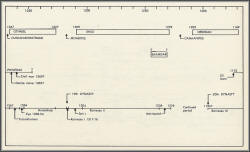
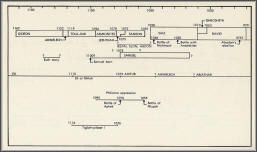
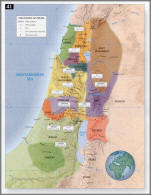
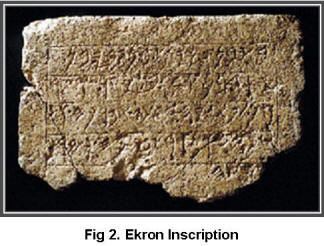 In
1993, archaeologists Seymour Gitin of the W. F. Albright
Institute of Archaeological Research and Trude Dothan of
Hebrew University of Jerusalem were excavating at Tel
Miqne in Israel.
In
1993, archaeologists Seymour Gitin of the W. F. Albright
Institute of Archaeological Research and Trude Dothan of
Hebrew University of Jerusalem were excavating at Tel
Miqne in Israel.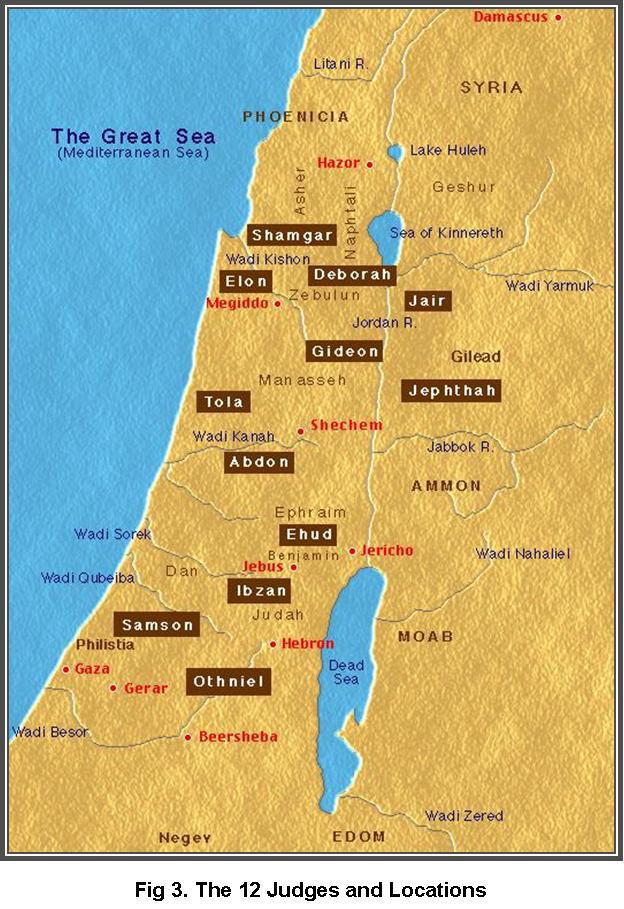 The
Book of Judges
The
Book of Judges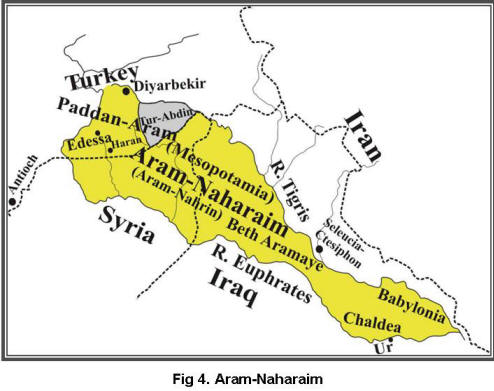

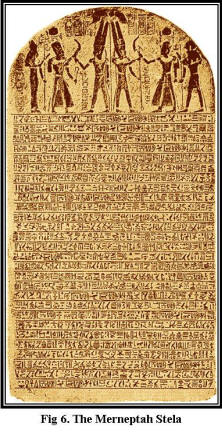 Merneptah
Stela
Merneptah
Stela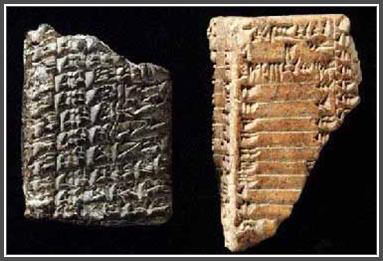 The
third oppression came from Canaanites, whom the
Israelite tribes should have driven from the land years
before. Jabin, king of Hazor, was the leader, and Sisera
was his general.
The
third oppression came from Canaanites, whom the
Israelite tribes should have driven from the land years
before. Jabin, king of Hazor, was the leader, and Sisera
was his general.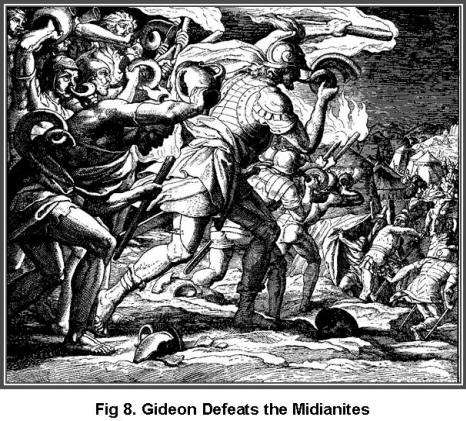 Oppression
and Deliverance
Oppression
and Deliverance 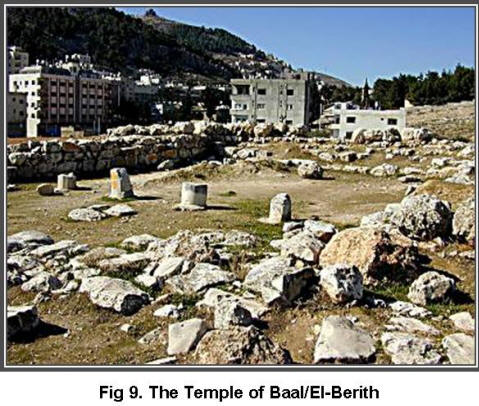
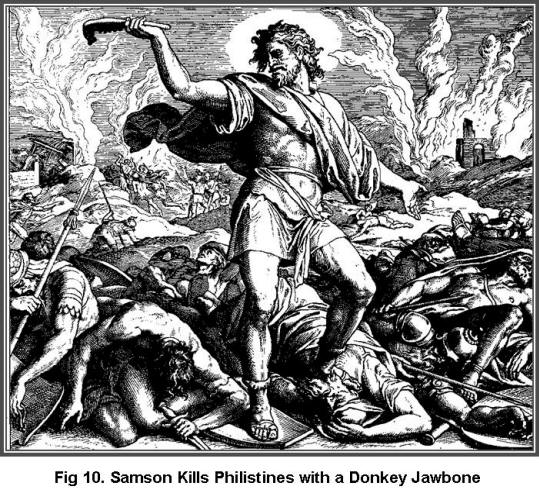 The
sixth and last oppression recorded in Judges was by the
Philistines. According to
The
sixth and last oppression recorded in Judges was by the
Philistines. According to 